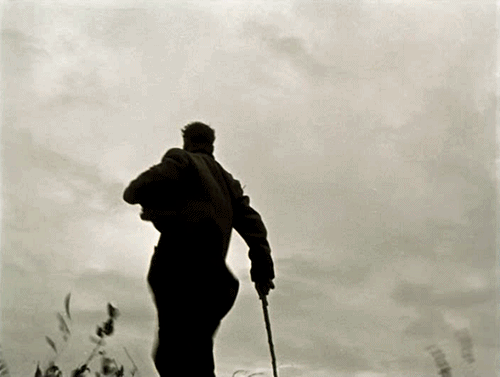#michurin
Text
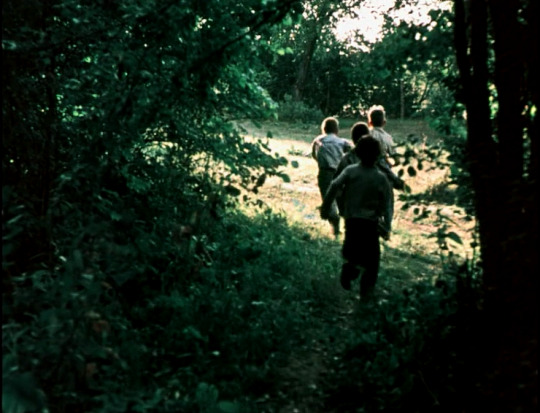

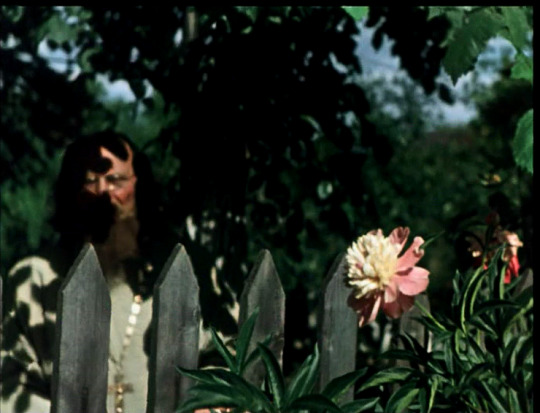


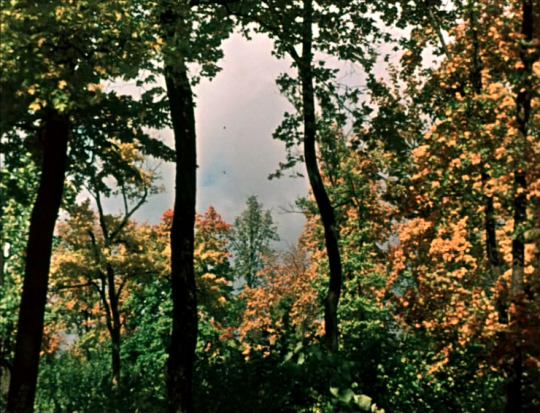


Michurin, Aleksandr Dovzhenko, 1949
0 notes
Text
Language of Flowers: Mountain Ash
In the language of flowers, each flower has its day. Today, November 2, that flower is Mountain Ash, which signifies prudence.
Image above from Wikipedia.
Sorbus aucuparia, commonly called rowan and Mountain Ash, is a species of deciduous tree or shrub in the rose family having clusters of small white flowers and bright red berries. Russian botanist Ivan Vladimirovich Michurin began in 1905 to…

View On WordPress
#birthday#folk medicine#herb beer#herbalism#Ivan Vladimirovich Michurin#Language of flowers#Mountain Ash#october#Rowan#Sorbus aucuparia
0 notes
Text


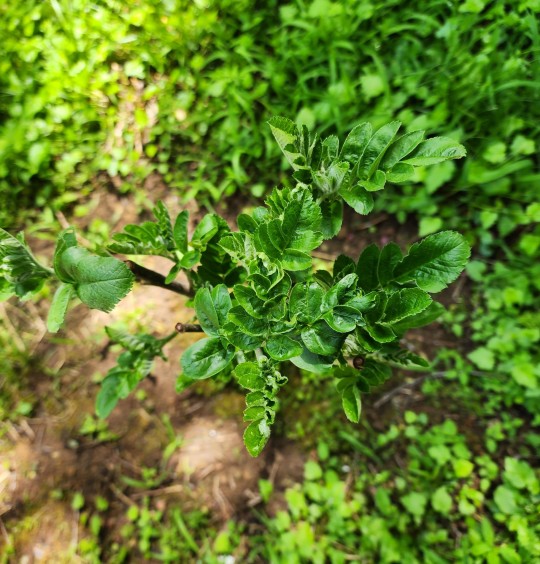

The Rowthorn: A Very Rare and Special Tree
Not too long ago, I began working with an extremely unique tree that I have since become pacted to, and I have finally been given leave to share about it publicly. It's a tree so unusual that it technically bares no common name and, instead, only has a couple of cultivar names and an undecided scientific name. The tree in question is one I have been calling a Rowthorn, since it is a cross between a Rowan Tree (Sorbus Acuparia) and a Hawthorn Tree (Crataegus Monogyna.) The resultant Crataegosorbus (or Sorbocrataegus, depending on your source) is a hybrid developed by Russian horticulturist Ivan Michurin in the 1920s, and can be phenotypically described as a nobbled Rowan tree with berries that look like rosy Haws the size of cherries. Miraculously, these Rowthorn berries are generally considered better for eating and cooking than either Rowan berries or Hawthorn berries are.
This tree is special to me for a couple reasons. On one hand, my grandfather was a botanist who specifically worked creating fruit tree hybrids in his day, which gives me a strange sort of ancestral connection to a tree born through human efforts. On the other hand, both Hawthorns and Rowans are quite historically and personally significant to my practice. Hawthorns possess ancient ties to the Otherworld and its denizens, and can serve to mark "thin places" where the realms are less experientially distinct from one another. As such, the Fae are often said to congregate at the sites of old Whitethorn trees. On the other hand, Rowans are also beloved by the Fae, who are said to enjoy dancing beneath their holy boughs—though, harvested wood from the tree can be utilized in a protective capacity against them as well. This ability of Rowan to both delight and repell the Fae is, in turn, closley aligned with my work as a Faerie Physicker. As such, a tree like the Rowthorn—which embodies the virtues of both these magical plants—is one I couldn't pass up the opportunity to know better, and so I invested in one the instant I was lucky enough to come across it.
Watching it grow from a bare and miniscule scion into a slowly flourishing sapling has been beautiful, and I can hardly wait for the day that it bares its first fruits.
52 notes
·
View notes
Text
Introduction
Lysenkoism was a pseudoscientific belief system associated with Soviet plant breeder Trofim Denisovich Lysenko (1898–1976). Lysenko rejected nearly a century of advances in genetics, the study of inherited characteristics in living things. His influence on science and agriculture in the Soviet Union in the 1930s through the early 1950s illustrates the disastrous consequences that may ensue when politics and ideology interfere with science. Lysenkoism became the Soviet government's official program and had major effects on government policies. It worsened food shortages in the Soviet Union, and real scientists were imprisoned for disagreeing with it. Some were killed.
Historical Background and Scientific Foundations
Ten years after Russia's 1917 revolution, which led to the formation of the Union of Soviet Socialist Republics (USSR), a plant breeder named Trofim Denisovich Lysenko observed that pea seeds germinated faster when maintained at low temperatures. Instead of reasoning that the plant's ability to respond flexibly to temperature variations was a natural characteristic—as further testing would have confirmed—Lysenko erroneously concluded that low temperatures forced seeds to alter their inherited characteristics.
Lysenko's erroneous conclusions were influenced by the teachings of Russian horticulturist I.V. Michurin (1855–1935), a holdover proponent of the Larmarckian theory of evolution by inheritance of acquired characteristics (the belief that species can evolve by individuals acquiring traits during their lifetime and then passing them on to offspring). Lamarckism had, at one time, been a legitimate scientific theory. In the late eighteenth and early nineteenth century, French anatomist Jean-Baptiste Lamarck (1744–1829) attempted to explain such adaptations as the long necks of giraffes by arguing that a giraffe, by stretching its neck to get leaves on high tree branches, actually made its neck lengthen, and that this individual would pass a longer neck on to its offspring. Thus, according to Lamarck, the extremely long necks of modern giraffes were the result of generation after generation of giraffes stretching their necks to reach higher for food. The evidence for Lamarckian evolution was once thought convincing: Even English naturalist Charles Darwin (1809–1882), discoverer of the real source of adaptive evolution (natural selection of random variations in inherited characteristics), taught that Lamarck's mechanism contributed to evolution.
Unfortunately for Lysenko and Soviet science, Lamarck's theory of evolution by the inheritance of acquired characteristics was incorrect. By the beginning of the twentieth century, scientists had already discarded Lamarckian evolution in favor of Darwin's concept of natural selection. Today, we know that the inheritable aspects of traits are determined by long, ladder-like molecules of DNA (deoxyribonucleic acid) found in the nucleus of almost every cell. These molecules of inheritance are not influenced by the use, disuse, or even loss of body parts. Darwinian natural selection explains the long necks of giraffes as the result of the greater feeding success, over many generations, of giraffes who happened, thanks to random changes in DNA, to have longer necks. Giraffes who, by chance, had shorter necks or other unfavorable characteristics have not left any offspring.
Despite the fact that Lamarck's theory of evolution by inheritance of acquired characteristics had already been widely discarded as a scientific hypothesis in the early twentieth century, a remarkable set of circumstances gave Lysenko the opportunity to sweep aside more than a hundred years of scientific investigation and advocate his own schemes for enhancing agricultural production. When Lysenko promised greater crop yields to government officials, a Soviet Central Committee, desperate to increase food production after famine in the early 1930s, listened with an attentive ear. Lysenko claimed that the spirit of Marxist theory (on which the Soviet Union was based) called for a theory of species formation which would entail “revolutionary leaps.” Lysenko attacked Mendelian genetics and Darwinian evolution as a theory of “gradualism.”
Lysenko constructed an elaborate hypothesis that came to be known as the theory of phasic development. One of Lysenko's ideas was to “toughen” seeds by treating them with heat and high humidity to increase their ability to germinate under harsh conditions. The desire to plant winter instead of spring forms of wheat was heightened by the need to expand Russian wheat production into areas climatically colder than traditional growing areas. The Nazi invasion during the Second World War made it critical to plant in colder, previously fallow eastern regions as the USSR was deprived of its Ukrainian breadbasket by Hitler's onslaught.
Faced with famine, Soviet agricultural planners became unconcerned with long-term scientific studies, making them vulnerable to Lysenko's unfounded claims. They believed what they wanted to believe, and looked no further into the validity of Lysenko's claims.
Lysenko ruled virtually supreme in Soviet science for years, extending his influence beyond agriculture to other areas of science. In 1940, Soviet dictator Joseph Stalin (1922–1953) appointed Lysenko Director of the Soviet Academy of Science's Institute of Genetics. In 1948, the Praesidium of the USSR Academy of Science passed a resolution virtually outlawing any biological work not based on Lysenko's ideas.
Although thousands of experiments carried out by geneticists all over the world failed to provide evidence for Lysenko's notions of transmutation of species—indeed, produced vast amounts of evidence against it—Lysenko's followers made increasingly grandiose claims regarding crop yields and the transformation of species. Not until 1953, following the death of Stalin, did the Soviet government publicity acknowledge that Soviet agriculture had failed to meet economic plan goals and thereby provide the food needed by the Soviet State.
The Lysenkoist episode reversed a longstanding tradition of Russian scientific progress. Despite the near-medieval conditions in which most of the population of Czarist Russia lived, the scientific achievements of pre-revolutionary Russia rivaled those of Europe and America. In fact, achievement in science had been one of the few avenues to wealth open to the non-nobility. The revolution had sought to maintain this tradition and win over the leaders of Russian science. From the earliest days, revolutionary leaders Lenin and Trotsky fought, even in the midst of famine and civil war, to make resources available for scientific research.
In the political storms that ravaged the Soviet Union following the rise of Stalin, including mass executions of dissidents and engineered famines in the Ukraine that killed millions, Lysenko's idea that all organisms, given the proper conditions, have the capacity to be or do anything seemed to have certain attractive parallels with the social philosophies of Karl Marx (and the twentieth century French philosopher Henri Bergson), who promoted the idea that man was largely a product of his own will. Enamored for ideological reasons with Lysenko's pseudoscientific claims, Stalin took matters one step further by personally attacking modern genetics as “counter-revolutionary” or “bourgeois” science. (“Bourgeois” is a French word meaning upper- and middle-class; in Soviet jargon, it was equivalent to “enemy of the revolution.”) While the rest of the scientific community knew that evolution could not be understood without Mendelian genetics, Stalin used violence and political power to suppress scientific inquiry. Under Stalin, science was made to serve political ideology: Scientists were required to say the things that those in power wanted them to say, regardless of physical reality.
The victory of Stalin's faction within the ruling party changed the previously nurturing relationship between the Soviet State and science. Important developments in science (including what we would term today the social sciences) were terminated by state terror. During the 1930s and 1940s, scientists were routinely executed, imprisoned, or exiled. Soviet science was largely carried forward in specially-built labor camps, where scientists denounced publicly as “saboteurs” continued their work in isolation from the outside world.
Information on genetics was eliminated from Soviet biology textbooks as Lysenko attempted to reduce his conflict with classical geneticists to politics. He stated that there existed two class-based biologies: “bourgeois” (bad) and “socialist, dialectical materialist” (good). The entire agricultural research infrastructure of the Soviet Union—a country where millions teetered on the edge of starvation—was devoted to a disproved scientific hypothesis, and inventive methods were used to falsely “prove” that there was no famine and that crop yields were actually on the rise.
Soviet Central Committee support of Lysenko was critical to his success. It was known that Stalin clearly expressed his positive attitude toward the idea of the inheritance of acquired characteristics and his overall support of Lamarckism; in such an atmosphere, some of Lysenko's supporters even denied the existence of chromosomes (dark objects in cell nuclei containing heritable material; it was not known until the 1950s that this material is the molecule DNA). Genes were denounced as “bourgeois constructs.” Under Lysenko, Mendelian genetics was branded “decadent,” and scientists who rejected Lamarckism in favor of natural selection became “enemies of the Soviet people.”
Some scientists resisted. Soviet geneticist Nikolay Ivanovich Vavilov (1887–1943) tried to expose Lysenko's claims as pseudoscientific. As a result, Vavilov was arrested in August 1940 and later died in a prison camp. Throughout Lysenko's reign there were widespread arrests of geneticists, who were denounced as “agents of international fascism.” In fear for their lives, many Soviet scientists submitted. Some presented fraudulent data to support Lysenko, others destroyed evidence showing that he was wrong. Letters by scientists who had once advanced Mendelian genetics were made public in which they confessed the errors of their ways and extolled the wisdom of the Party.
Lysenko falsely predicted greater crop yields through hardening of seeds and a new system of crop rotation. His crop rotation method eventually led to soil depletion that required years of replenishment with mineral fertilizers. Under Lysenko's direction, hybrid corn programs based on successful U.S. models were ended and the research facilities destroyed because Lysenko opposed what he termed “inbreeding.”
When Nikita Khrushchev (1894–1971) assumed the post of Soviet Premier following the death of Stalin in 1953, opposition to Lysenko began slowly to grow. Khrushchev eventually stated that under Lysenko “Soviet agricultural research spent over 30 years in darkness.” In 1964, Lysenko's doctrines were officially discredited, and intensive efforts were made toward reestablishing Mendelian genetics and bringing Soviet agriculture, biology, and genetics into conformity with Western nations.
==
Lysenokism is what happens when objective reality is denied in order to prop up a political, ideological narrative.
Say what's true. Reality will not tolerate otherwise.
#Lysenkoism#Trofim Lysenko#antiscience#anti science#science denial#science deniers#objective reality#pseudoscience#ideological corruption#science vs pseudoscience#pseudoscience vs science#Soviet famine#religion is a mental illness
11 notes
·
View notes
Text
In this blog post, one of our programmers, Vlad, talks about the development of shaders used to give Trial of Sacrifice its distinct look.
#TrialOfSacrifice#student capstone#game development#indie games#game dev#video games#shader programming#Unity#unity3d
1 note
·
View note
Text
This is the book I was talking about. An absolute wonder!! Pity some bugs ate up some pages.
But I saved him!! If it was for my teacher, she would've thrown it away.






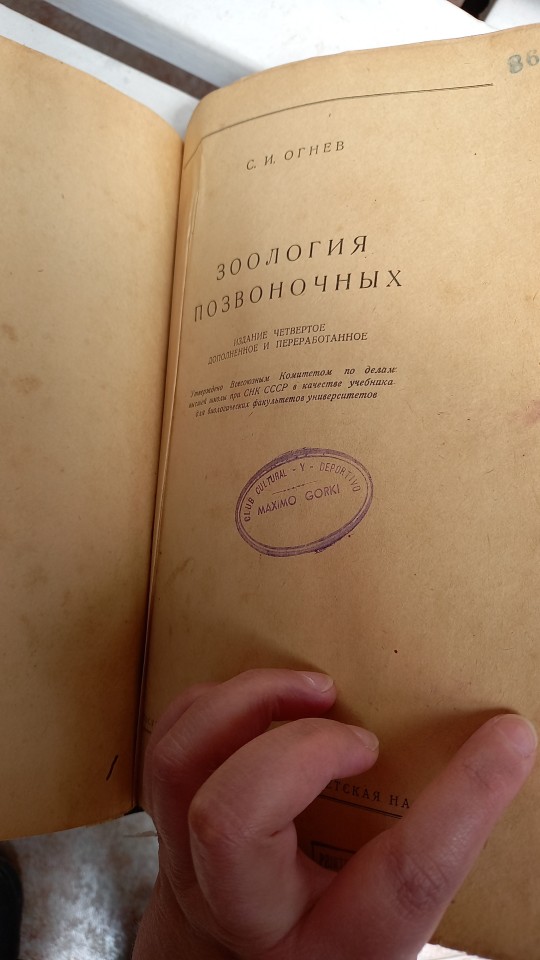
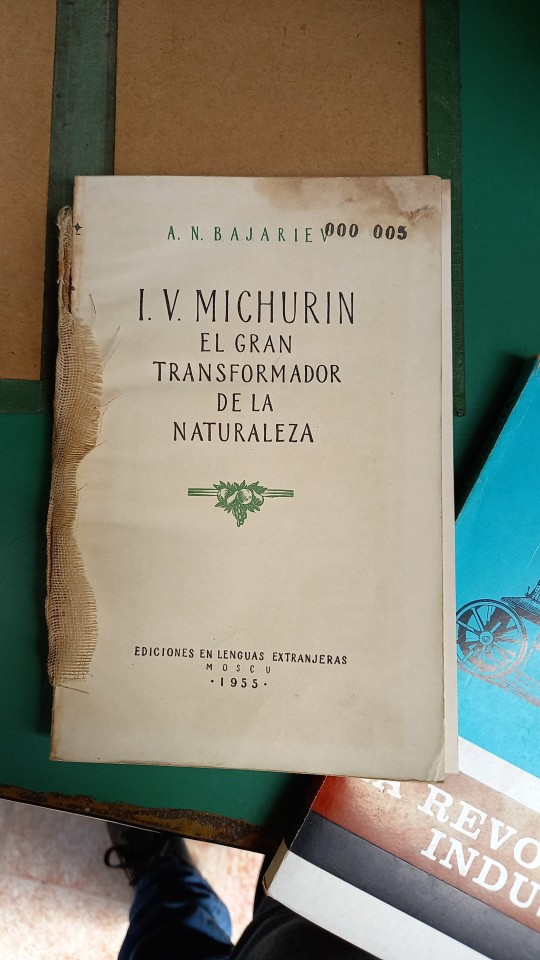

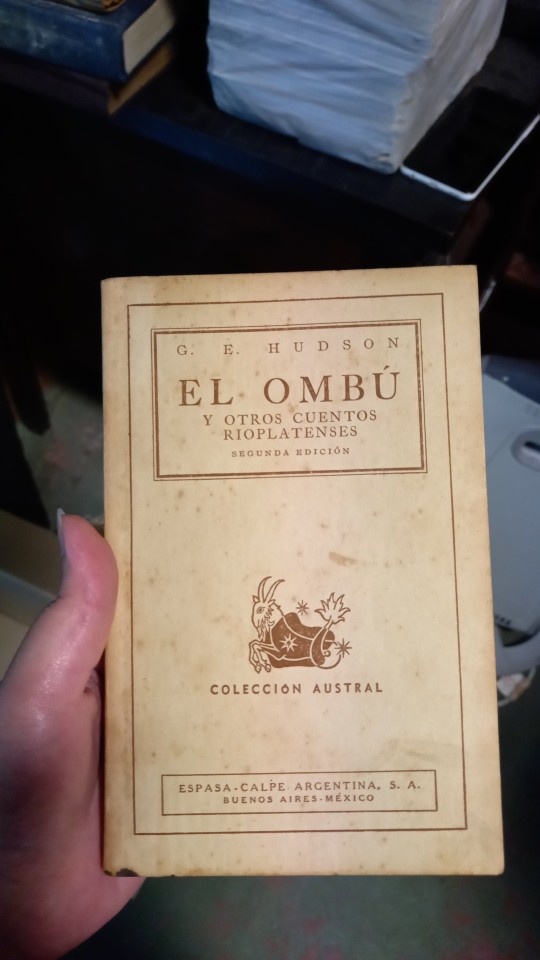
I've shown these books to my aunt (she studies Anthropology) so those are mostly Ethnographic material:
-Compilation of the first cultures' History(by Osven)
-Works on the early cultures (this one is from the Hermitage)
-Scientific works (Karpinsky)
-Material and findings of Moscow's Arqueology (many authors)
-Zoology (Ognev) the one in the video.
-Michurin's biography (by Bajariev, translated to Spanish)
with the exception of the 2 recepies books, one by Doña Petrona (the argentinian Julia Child) and one from the german magazine Burda. The one named El Ombú (the ombú is a tree from my country was written by the naturalist Guillermo Hudson... altough this one is a compendium of tales an poetry of our province)
1 note
·
View note
Photo

Западная часть Воскресенского собора Новоиерусалимского монастыря представляет из себя огромную полуротонду. ⠀ В её центре - часовня Гроба Господня, или кувуклия, созданная по иерусалимскому образцу. ⠀ Годы постройки собора: 1656-1685 годы, строили московские зодчие Аверкий Мокеев, Иван Белозер и др. В первой половине XVIII века шатёр ротонды обрушился, восстанавливался Иваном Фёдоровичем Мичуриным. ⠀ Город Истра, Московская область. ⠀ The western part of the Resurrection Cathedral of the New Jerusalem Monastery is a huge semi-rotunda. ⠀ In its center there is the chapel of the Holy Sepulcher, or cuvuklia, created according to the Jerusalem model. ⠀ The cathedral was built in 1656-1685 by Moscow architects Averky Mokeev, Ivan Belozer and others. In the first half of the 18th century, the rotunda tent collapsed and was restored by Ivan Fedorovich Michurin. ⠀ City of Istra, Moscow region. ⠀ #Россия #Russia #Москва #Moscow #Istra #NewJerusalem #НовыйИерусалим #Истра #монастырь #monastery #church #церковь #собор #cathedral #fortification #крепость #HolyLand #СвятаяЗемля #фортепиано #пианист #преподаватель #репетитор #репетиторы #concertpianist #педагог #школамузыки #урокимузыки #музыкалка #музыкальнаяшкола #учительмузыки (at Воскресенский собор Новоиерусалимского монастыря) https://www.instagram.com/p/Ci6XqlWo4O7/?igshid=NGJjMDIxMWI=
#россия#russia#москва#moscow#istra#newjerusalem#новыйиерусалим#истра#монастырь#monastery#church#церковь#собор#cathedral#fortification#крепость#holyland#святаяземля#фортепиано#пианист#преподаватель#репетитор#репетиторы#concertpianist#педагог#школамузыки#урокимузыки#музыкалка#музыкальнаяшкола#учительмузыки
0 notes
Photo
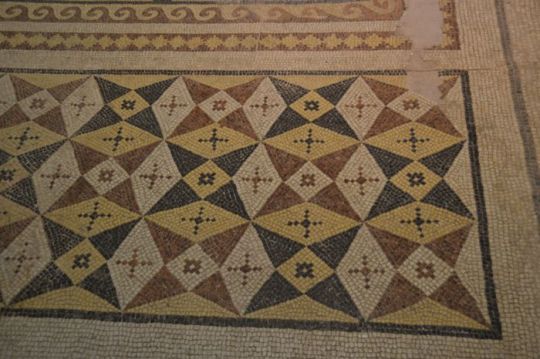
SOUTHERN COAST BULGARIA
The calm warm sea, the endless beaches and dunes, the cloudless days, the picturesque little bays and romantic scenery of the Bulgarian southern coast attract thousands of foreign tourists from the beginning of May to the end of October.
Modem hotels, motels, camp sites, bungalows and restaurants, bars and shops offer comfort and all conveniences to all wishing to spend their holiday amid nature.
The southern Bulgarian coast may justly be called a paradise for campers. Over a stretch of 70 km scores ofcamp sites have been built, and besides them tourists have at their disposal thousands of private lodgings with the romantic atmosphere of the old houses combined with the comfort of up-to- date modern dwellings.
Sozopol tourists
Five km south of Sozopol tourists will Find a motel with 70 beds, Smokinya Camp Site, special class, with accommodation for 1,200 persons, Kavatsite Camp Site – for 600, Vesselie Camp Site – 3rd class, for 450. Besides, there is a 1st-class restaurant, a night club and a small grocer’s shop. Information and managing offices at Smokinya Camp Site.
13 km south of Sozopol lies one of the most attractive corners of the Southern Bulgarian coast – the complex of a motel and camp sites, Arkoutino. The motel is two-storeyed, with 2- and 3-bed rooms and showers. The First-class restaurant next to the motel serves excellent Bulgarian and French dishes and choice drinks. Lilia Night Club is noted for its exotic atmosphere.
Arkoutino Camp Site, 1st class, for 1,200; Lilia Camp Site, 2nd class, also for 1,200. To the south of them flows one of the most picturesque guided tour ephesusand interesting Bulgarian rivers – the Ropotamo.
The village of Primorsko lies 27 km south of Sozopol and 59 km from Bourgas. There are 800 private lodgings for tourists, many restaurants and holiday houses. Perla Camp Site, special class, is one of the best organized in the area. Capacity – 4,000 guests at a time with 1,000 cars – plus all modern conveniences. The Less Camp Site, 1st class, for 1,900 and Atliman Camp Site, 1st class, for 1,000, are also near Primorsko.
For information and full details, please contact the Balkan- tourist Bureau on the central village square or the one at Perla Camp Site.
3 km south of Primorsko in a young oak forest is the Inter-national Youth Tourist Centre, with its three modern hotels, hundreds of bungalows, restaurants, night clubs and folk-style taverns, etc. The complex has room for 3, 000 holidaymakers. Stays at the centre are organized by the Orbita Youth Bureau for International Excursions in Sofia.
Right next to the Youth Centre and south of it lies the town of Kiten with several camp sites: Coop – 2nd class, for 700, Youg – 1st class, for 600, Koral – 2nd class, for 1,200.
The picturesque fishing port of Michurin lies 76 km from Bourgas and offers lodgings in private homes. In the town centre there is a restaurant and a tourist bureau.
The nearby village of Bulgari is well-known for its ritual folklore nestinarski dances (barefoot dances on live coals.)
Another 15 km further south lies the smallest town on the Bulgarian Black Sea coast – A htopoi Near it is the Ahtopoi Camp Site, 2nd class, for 400. The picturesque River Veleka ,flows into the sea nearby.
0 notes
Photo
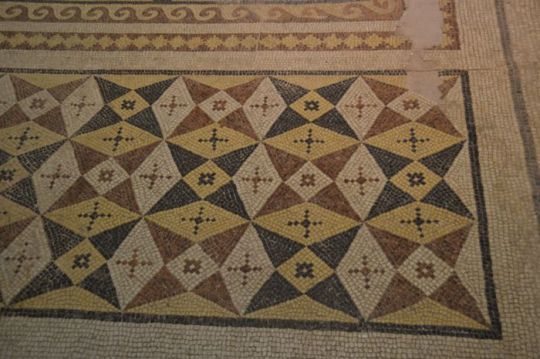
SOUTHERN COAST BULGARIA
The calm warm sea, the endless beaches and dunes, the cloudless days, the picturesque little bays and romantic scenery of the Bulgarian southern coast attract thousands of foreign tourists from the beginning of May to the end of October.
Modem hotels, motels, camp sites, bungalows and restaurants, bars and shops offer comfort and all conveniences to all wishing to spend their holiday amid nature.
The southern Bulgarian coast may justly be called a paradise for campers. Over a stretch of 70 km scores ofcamp sites have been built, and besides them tourists have at their disposal thousands of private lodgings with the romantic atmosphere of the old houses combined with the comfort of up-to- date modern dwellings.
Sozopol tourists
Five km south of Sozopol tourists will Find a motel with 70 beds, Smokinya Camp Site, special class, with accommodation for 1,200 persons, Kavatsite Camp Site – for 600, Vesselie Camp Site – 3rd class, for 450. Besides, there is a 1st-class restaurant, a night club and a small grocer’s shop. Information and managing offices at Smokinya Camp Site.
13 km south of Sozopol lies one of the most attractive corners of the Southern Bulgarian coast – the complex of a motel and camp sites, Arkoutino. The motel is two-storeyed, with 2- and 3-bed rooms and showers. The First-class restaurant next to the motel serves excellent Bulgarian and French dishes and choice drinks. Lilia Night Club is noted for its exotic atmosphere.
Arkoutino Camp Site, 1st class, for 1,200; Lilia Camp Site, 2nd class, also for 1,200. To the south of them flows one of the most picturesque guided tour ephesusand interesting Bulgarian rivers – the Ropotamo.
The village of Primorsko lies 27 km south of Sozopol and 59 km from Bourgas. There are 800 private lodgings for tourists, many restaurants and holiday houses. Perla Camp Site, special class, is one of the best organized in the area. Capacity – 4,000 guests at a time with 1,000 cars – plus all modern conveniences. The Less Camp Site, 1st class, for 1,900 and Atliman Camp Site, 1st class, for 1,000, are also near Primorsko.
For information and full details, please contact the Balkan- tourist Bureau on the central village square or the one at Perla Camp Site.
3 km south of Primorsko in a young oak forest is the Inter-national Youth Tourist Centre, with its three modern hotels, hundreds of bungalows, restaurants, night clubs and folk-style taverns, etc. The complex has room for 3, 000 holidaymakers. Stays at the centre are organized by the Orbita Youth Bureau for International Excursions in Sofia.
Right next to the Youth Centre and south of it lies the town of Kiten with several camp sites: Coop – 2nd class, for 700, Youg – 1st class, for 600, Koral – 2nd class, for 1,200.
The picturesque fishing port of Michurin lies 76 km from Bourgas and offers lodgings in private homes. In the town centre there is a restaurant and a tourist bureau.
The nearby village of Bulgari is well-known for its ritual folklore nestinarski dances (barefoot dances on live coals.)
Another 15 km further south lies the smallest town on the Bulgarian Black Sea coast – A htopoi Near it is the Ahtopoi Camp Site, 2nd class, for 400. The picturesque River Veleka ,flows into the sea nearby.
0 notes
Photo
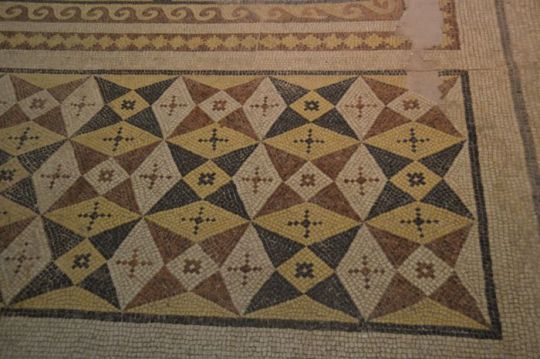
SOUTHERN COAST BULGARIA
The calm warm sea, the endless beaches and dunes, the cloudless days, the picturesque little bays and romantic scenery of the Bulgarian southern coast attract thousands of foreign tourists from the beginning of May to the end of October.
Modem hotels, motels, camp sites, bungalows and restaurants, bars and shops offer comfort and all conveniences to all wishing to spend their holiday amid nature.
The southern Bulgarian coast may justly be called a paradise for campers. Over a stretch of 70 km scores ofcamp sites have been built, and besides them tourists have at their disposal thousands of private lodgings with the romantic atmosphere of the old houses combined with the comfort of up-to- date modern dwellings.
Sozopol tourists
Five km south of Sozopol tourists will Find a motel with 70 beds, Smokinya Camp Site, special class, with accommodation for 1,200 persons, Kavatsite Camp Site – for 600, Vesselie Camp Site – 3rd class, for 450. Besides, there is a 1st-class restaurant, a night club and a small grocer’s shop. Information and managing offices at Smokinya Camp Site.
13 km south of Sozopol lies one of the most attractive corners of the Southern Bulgarian coast – the complex of a motel and camp sites, Arkoutino. The motel is two-storeyed, with 2- and 3-bed rooms and showers. The First-class restaurant next to the motel serves excellent Bulgarian and French dishes and choice drinks. Lilia Night Club is noted for its exotic atmosphere.
Arkoutino Camp Site, 1st class, for 1,200; Lilia Camp Site, 2nd class, also for 1,200. To the south of them flows one of the most picturesque guided tour ephesusand interesting Bulgarian rivers – the Ropotamo.
The village of Primorsko lies 27 km south of Sozopol and 59 km from Bourgas. There are 800 private lodgings for tourists, many restaurants and holiday houses. Perla Camp Site, special class, is one of the best organized in the area. Capacity – 4,000 guests at a time with 1,000 cars – plus all modern conveniences. The Less Camp Site, 1st class, for 1,900 and Atliman Camp Site, 1st class, for 1,000, are also near Primorsko.
For information and full details, please contact the Balkan- tourist Bureau on the central village square or the one at Perla Camp Site.
3 km south of Primorsko in a young oak forest is the Inter-national Youth Tourist Centre, with its three modern hotels, hundreds of bungalows, restaurants, night clubs and folk-style taverns, etc. The complex has room for 3, 000 holidaymakers. Stays at the centre are organized by the Orbita Youth Bureau for International Excursions in Sofia.
Right next to the Youth Centre and south of it lies the town of Kiten with several camp sites: Coop – 2nd class, for 700, Youg – 1st class, for 600, Koral – 2nd class, for 1,200.
The picturesque fishing port of Michurin lies 76 km from Bourgas and offers lodgings in private homes. In the town centre there is a restaurant and a tourist bureau.
The nearby village of Bulgari is well-known for its ritual folklore nestinarski dances (barefoot dances on live coals.)
Another 15 km further south lies the smallest town on the Bulgarian Black Sea coast – A htopoi Near it is the Ahtopoi Camp Site, 2nd class, for 400. The picturesque River Veleka ,flows into the sea nearby.
0 notes
Photo

SOUTHERN COAST BULGARIA
The calm warm sea, the endless beaches and dunes, the cloudless days, the picturesque little bays and romantic scenery of the Bulgarian southern coast attract thousands of foreign tourists from the beginning of May to the end of October.
Modem hotels, motels, camp sites, bungalows and restaurants, bars and shops offer comfort and all conveniences to all wishing to spend their holiday amid nature.
The southern Bulgarian coast may justly be called a paradise for campers. Over a stretch of 70 km scores ofcamp sites have been built, and besides them tourists have at their disposal thousands of private lodgings with the romantic atmosphere of the old houses combined with the comfort of up-to- date modern dwellings.
Sozopol tourists
Five km south of Sozopol tourists will Find a motel with 70 beds, Smokinya Camp Site, special class, with accommodation for 1,200 persons, Kavatsite Camp Site – for 600, Vesselie Camp Site – 3rd class, for 450. Besides, there is a 1st-class restaurant, a night club and a small grocer’s shop. Information and managing offices at Smokinya Camp Site.
13 km south of Sozopol lies one of the most attractive corners of the Southern Bulgarian coast – the complex of a motel and camp sites, Arkoutino. The motel is two-storeyed, with 2- and 3-bed rooms and showers. The First-class restaurant next to the motel serves excellent Bulgarian and French dishes and choice drinks. Lilia Night Club is noted for its exotic atmosphere.
Arkoutino Camp Site, 1st class, for 1,200; Lilia Camp Site, 2nd class, also for 1,200. To the south of them flows one of the most picturesque guided tour ephesusand interesting Bulgarian rivers – the Ropotamo.
The village of Primorsko lies 27 km south of Sozopol and 59 km from Bourgas. There are 800 private lodgings for tourists, many restaurants and holiday houses. Perla Camp Site, special class, is one of the best organized in the area. Capacity – 4,000 guests at a time with 1,000 cars – plus all modern conveniences. The Less Camp Site, 1st class, for 1,900 and Atliman Camp Site, 1st class, for 1,000, are also near Primorsko.
For information and full details, please contact the Balkan- tourist Bureau on the central village square or the one at Perla Camp Site.
3 km south of Primorsko in a young oak forest is the Inter-national Youth Tourist Centre, with its three modern hotels, hundreds of bungalows, restaurants, night clubs and folk-style taverns, etc. The complex has room for 3, 000 holidaymakers. Stays at the centre are organized by the Orbita Youth Bureau for International Excursions in Sofia.
Right next to the Youth Centre and south of it lies the town of Kiten with several camp sites: Coop – 2nd class, for 700, Youg – 1st class, for 600, Koral – 2nd class, for 1,200.
The picturesque fishing port of Michurin lies 76 km from Bourgas and offers lodgings in private homes. In the town centre there is a restaurant and a tourist bureau.
The nearby village of Bulgari is well-known for its ritual folklore nestinarski dances (barefoot dances on live coals.)
Another 15 km further south lies the smallest town on the Bulgarian Black Sea coast – A htopoi Near it is the Ahtopoi Camp Site, 2nd class, for 400. The picturesque River Veleka ,flows into the sea nearby.
0 notes
Photo

SOUTHERN COAST BULGARIA
The calm warm sea, the endless beaches and dunes, the cloudless days, the picturesque little bays and romantic scenery of the Bulgarian southern coast attract thousands of foreign tourists from the beginning of May to the end of October.
Modem hotels, motels, camp sites, bungalows and restaurants, bars and shops offer comfort and all conveniences to all wishing to spend their holiday amid nature.
The southern Bulgarian coast may justly be called a paradise for campers. Over a stretch of 70 km scores ofcamp sites have been built, and besides them tourists have at their disposal thousands of private lodgings with the romantic atmosphere of the old houses combined with the comfort of up-to- date modern dwellings.
Sozopol tourists
Five km south of Sozopol tourists will Find a motel with 70 beds, Smokinya Camp Site, special class, with accommodation for 1,200 persons, Kavatsite Camp Site – for 600, Vesselie Camp Site – 3rd class, for 450. Besides, there is a 1st-class restaurant, a night club and a small grocer’s shop. Information and managing offices at Smokinya Camp Site.
13 km south of Sozopol lies one of the most attractive corners of the Southern Bulgarian coast – the complex of a motel and camp sites, Arkoutino. The motel is two-storeyed, with 2- and 3-bed rooms and showers. The First-class restaurant next to the motel serves excellent Bulgarian and French dishes and choice drinks. Lilia Night Club is noted for its exotic atmosphere.
Arkoutino Camp Site, 1st class, for 1,200; Lilia Camp Site, 2nd class, also for 1,200. To the south of them flows one of the most picturesque guided tour ephesusand interesting Bulgarian rivers – the Ropotamo.
The village of Primorsko lies 27 km south of Sozopol and 59 km from Bourgas. There are 800 private lodgings for tourists, many restaurants and holiday houses. Perla Camp Site, special class, is one of the best organized in the area. Capacity – 4,000 guests at a time with 1,000 cars – plus all modern conveniences. The Less Camp Site, 1st class, for 1,900 and Atliman Camp Site, 1st class, for 1,000, are also near Primorsko.
For information and full details, please contact the Balkan- tourist Bureau on the central village square or the one at Perla Camp Site.
3 km south of Primorsko in a young oak forest is the Inter-national Youth Tourist Centre, with its three modern hotels, hundreds of bungalows, restaurants, night clubs and folk-style taverns, etc. The complex has room for 3, 000 holidaymakers. Stays at the centre are organized by the Orbita Youth Bureau for International Excursions in Sofia.
Right next to the Youth Centre and south of it lies the town of Kiten with several camp sites: Coop – 2nd class, for 700, Youg – 1st class, for 600, Koral – 2nd class, for 1,200.
The picturesque fishing port of Michurin lies 76 km from Bourgas and offers lodgings in private homes. In the town centre there is a restaurant and a tourist bureau.
The nearby village of Bulgari is well-known for its ritual folklore nestinarski dances (barefoot dances on live coals.)
Another 15 km further south lies the smallest town on the Bulgarian Black Sea coast – A htopoi Near it is the Ahtopoi Camp Site, 2nd class, for 400. The picturesque River Veleka ,flows into the sea nearby.
0 notes
Photo

SOUTHERN COAST BULGARIA
The calm warm sea, the endless beaches and dunes, the cloudless days, the picturesque little bays and romantic scenery of the Bulgarian southern coast attract thousands of foreign tourists from the beginning of May to the end of October.
Modem hotels, motels, camp sites, bungalows and restaurants, bars and shops offer comfort and all conveniences to all wishing to spend their holiday amid nature.
The southern Bulgarian coast may justly be called a paradise for campers. Over a stretch of 70 km scores ofcamp sites have been built, and besides them tourists have at their disposal thousands of private lodgings with the romantic atmosphere of the old houses combined with the comfort of up-to- date modern dwellings.
Sozopol tourists
Five km south of Sozopol tourists will Find a motel with 70 beds, Smokinya Camp Site, special class, with accommodation for 1,200 persons, Kavatsite Camp Site – for 600, Vesselie Camp Site – 3rd class, for 450. Besides, there is a 1st-class restaurant, a night club and a small grocer’s shop. Information and managing offices at Smokinya Camp Site.
13 km south of Sozopol lies one of the most attractive corners of the Southern Bulgarian coast – the complex of a motel and camp sites, Arkoutino. The motel is two-storeyed, with 2- and 3-bed rooms and showers. The First-class restaurant next to the motel serves excellent Bulgarian and French dishes and choice drinks. Lilia Night Club is noted for its exotic atmosphere.
Arkoutino Camp Site, 1st class, for 1,200; Lilia Camp Site, 2nd class, also for 1,200. To the south of them flows one of the most picturesque guided tour ephesusand interesting Bulgarian rivers – the Ropotamo.
The village of Primorsko lies 27 km south of Sozopol and 59 km from Bourgas. There are 800 private lodgings for tourists, many restaurants and holiday houses. Perla Camp Site, special class, is one of the best organized in the area. Capacity – 4,000 guests at a time with 1,000 cars – plus all modern conveniences. The Less Camp Site, 1st class, for 1,900 and Atliman Camp Site, 1st class, for 1,000, are also near Primorsko.
For information and full details, please contact the Balkan- tourist Bureau on the central village square or the one at Perla Camp Site.
3 km south of Primorsko in a young oak forest is the Inter-national Youth Tourist Centre, with its three modern hotels, hundreds of bungalows, restaurants, night clubs and folk-style taverns, etc. The complex has room for 3, 000 holidaymakers. Stays at the centre are organized by the Orbita Youth Bureau for International Excursions in Sofia.
Right next to the Youth Centre and south of it lies the town of Kiten with several camp sites: Coop – 2nd class, for 700, Youg – 1st class, for 600, Koral – 2nd class, for 1,200.
The picturesque fishing port of Michurin lies 76 km from Bourgas and offers lodgings in private homes. In the town centre there is a restaurant and a tourist bureau.
The nearby village of Bulgari is well-known for its ritual folklore nestinarski dances (barefoot dances on live coals.)
Another 15 km further south lies the smallest town on the Bulgarian Black Sea coast – A htopoi Near it is the Ahtopoi Camp Site, 2nd class, for 400. The picturesque River Veleka ,flows into the sea nearby.
0 notes
Photo

SOUTHERN COAST BULGARIA
The calm warm sea, the endless beaches and dunes, the cloudless days, the picturesque little bays and romantic scenery of the Bulgarian southern coast attract thousands of foreign tourists from the beginning of May to the end of October.
Modem hotels, motels, camp sites, bungalows and restaurants, bars and shops offer comfort and all conveniences to all wishing to spend their holiday amid nature.
The southern Bulgarian coast may justly be called a paradise for campers. Over a stretch of 70 km scores ofcamp sites have been built, and besides them tourists have at their disposal thousands of private lodgings with the romantic atmosphere of the old houses combined with the comfort of up-to- date modern dwellings.
Sozopol tourists
Five km south of Sozopol tourists will Find a motel with 70 beds, Smokinya Camp Site, special class, with accommodation for 1,200 persons, Kavatsite Camp Site – for 600, Vesselie Camp Site – 3rd class, for 450. Besides, there is a 1st-class restaurant, a night club and a small grocer’s shop. Information and managing offices at Smokinya Camp Site.
13 km south of Sozopol lies one of the most attractive corners of the Southern Bulgarian coast – the complex of a motel and camp sites, Arkoutino. The motel is two-storeyed, with 2- and 3-bed rooms and showers. The First-class restaurant next to the motel serves excellent Bulgarian and French dishes and choice drinks. Lilia Night Club is noted for its exotic atmosphere.
Arkoutino Camp Site, 1st class, for 1,200; Lilia Camp Site, 2nd class, also for 1,200. To the south of them flows one of the most picturesque guided tour ephesusand interesting Bulgarian rivers – the Ropotamo.
The village of Primorsko lies 27 km south of Sozopol and 59 km from Bourgas. There are 800 private lodgings for tourists, many restaurants and holiday houses. Perla Camp Site, special class, is one of the best organized in the area. Capacity – 4,000 guests at a time with 1,000 cars – plus all modern conveniences. The Less Camp Site, 1st class, for 1,900 and Atliman Camp Site, 1st class, for 1,000, are also near Primorsko.
For information and full details, please contact the Balkan- tourist Bureau on the central village square or the one at Perla Camp Site.
3 km south of Primorsko in a young oak forest is the Inter-national Youth Tourist Centre, with its three modern hotels, hundreds of bungalows, restaurants, night clubs and folk-style taverns, etc. The complex has room for 3, 000 holidaymakers. Stays at the centre are organized by the Orbita Youth Bureau for International Excursions in Sofia.
Right next to the Youth Centre and south of it lies the town of Kiten with several camp sites: Coop – 2nd class, for 700, Youg – 1st class, for 600, Koral – 2nd class, for 1,200.
The picturesque fishing port of Michurin lies 76 km from Bourgas and offers lodgings in private homes. In the town centre there is a restaurant and a tourist bureau.
The nearby village of Bulgari is well-known for its ritual folklore nestinarski dances (barefoot dances on live coals.)
Another 15 km further south lies the smallest town on the Bulgarian Black Sea coast – A htopoi Near it is the Ahtopoi Camp Site, 2nd class, for 400. The picturesque River Veleka ,flows into the sea nearby.
0 notes





